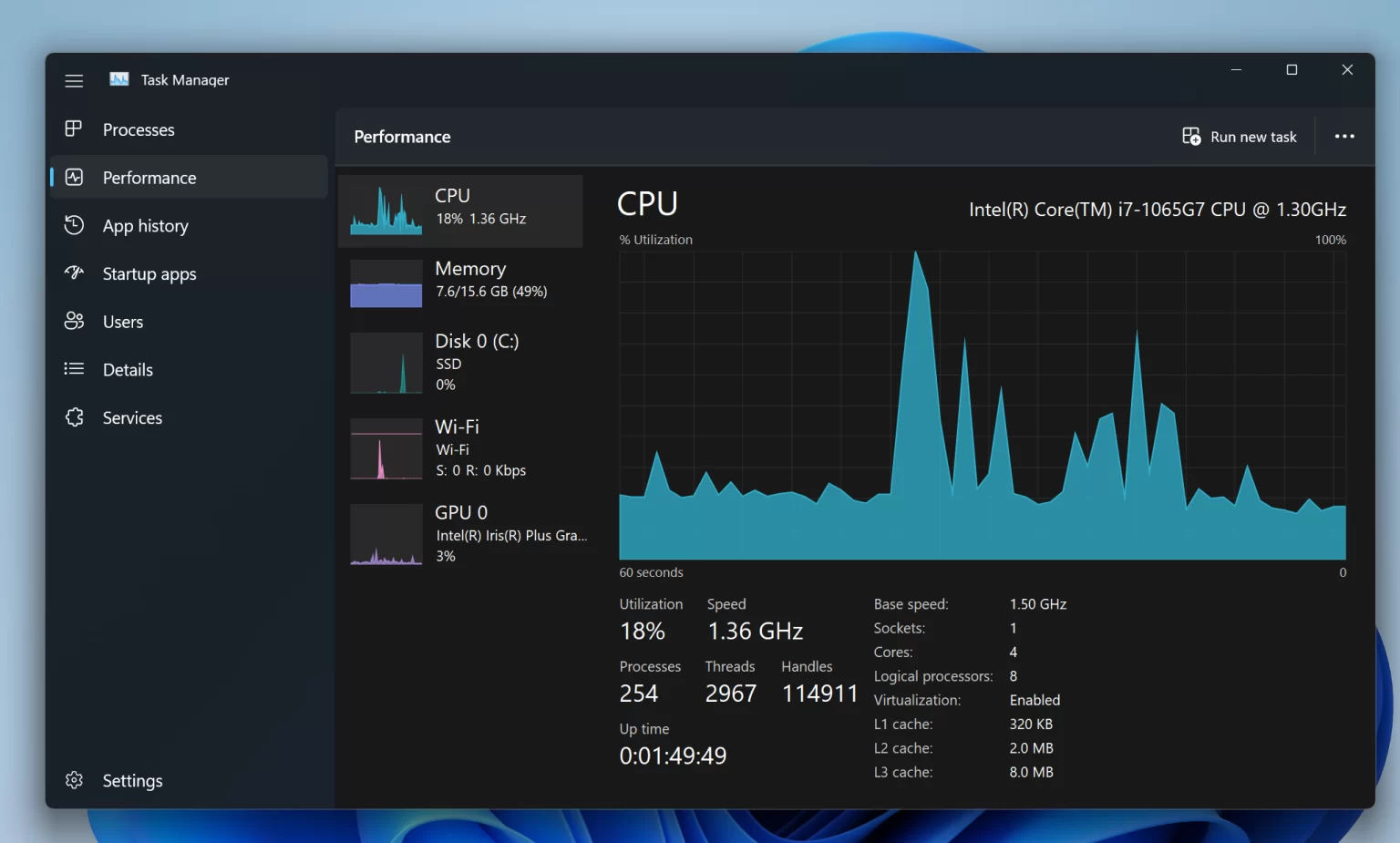How To Use Task Manager In Windows 11?
If a program is not responding correctly or the computer is performing poorly, you can use a task manager to terminate processes that consume too much processing power.
In Windows 11, if one or more processes are misbehaving and taking over system resources, causing your computer to slow down or stop a specific program, you can use Task Manager to end those processes and Fix the problem.
Task Manager is a program that has been available for a long time and allows you to view and control running programs and services. The Processes section in this program is the most helpful because it will enable you to quickly monitor the use of system resources, including processor, memory, drive, and network for each program. Also, this section will allow you to terminate or restart problematic programs.
The following guide will help you find and terminate resource-consuming processes in Windows 11 using Task Manager.
Ways to control processes with high resource consumption with Task Manager
The method of dealing with processing consumption is straightforward. You need to know how to access the Task Manager and see the process you need to terminate. To do this, you need to open the Task Manager.
You can open the Task Manager in at least five ways:
- Search for Task Manager from the Start menu and select the program from the results.
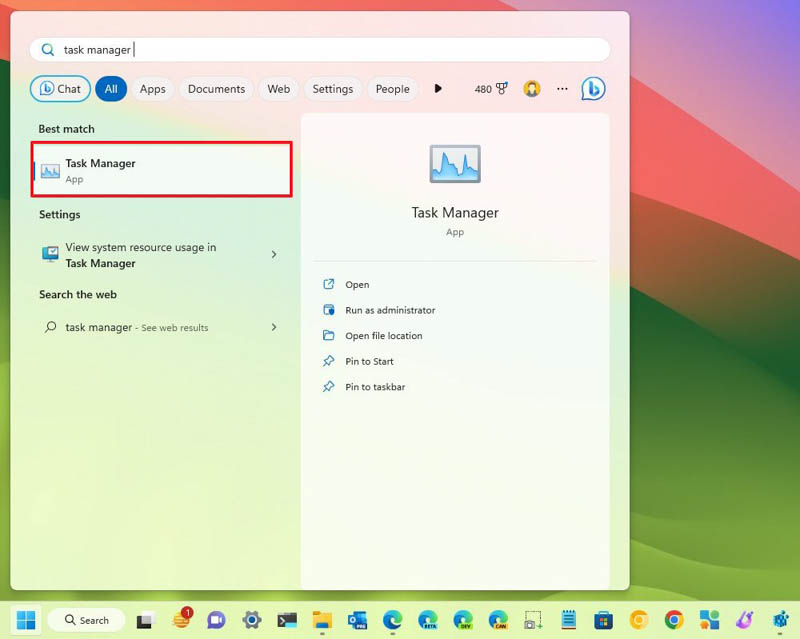
- Right-click on the Taskbar and choose Task Manager from the menu that opens.

- Right-click the Start button (or use the Windows key + X keyboard shortcut) and select Task Manager.
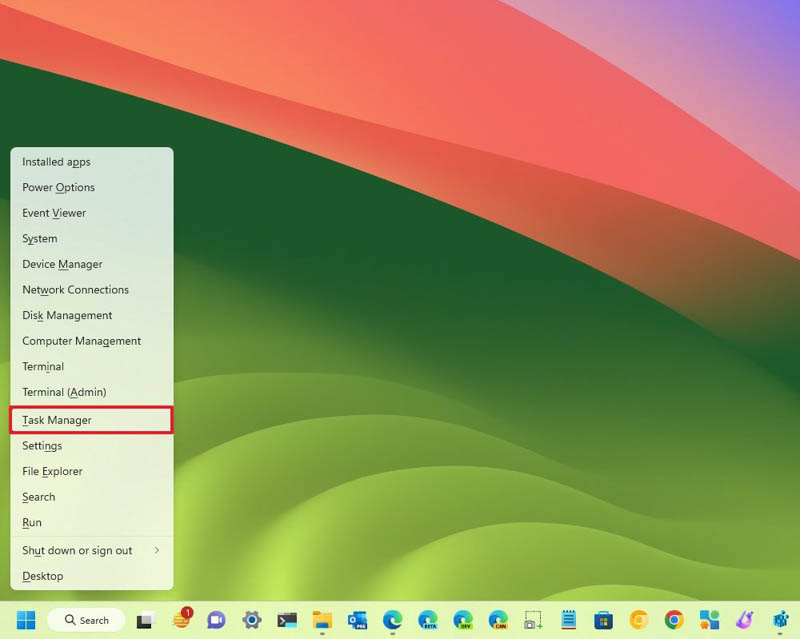
- Use the keyboard shortcut Ctrl + Shift + Esc.
- Use the keyboard shortcut Ctrl + Alt + Del and click the Task Manager option.
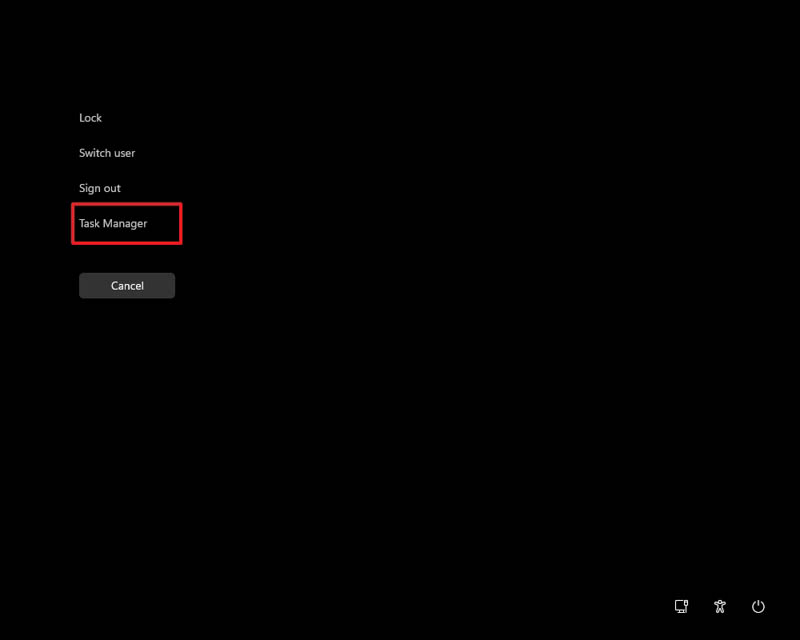
Processes tab explained
After entering the Task Manager, you will see a screen with several tabs in the navigation panel, but the right place is the Processes tab. Typically, this is the first place to check to determine if one or more processes are hogging system resources.
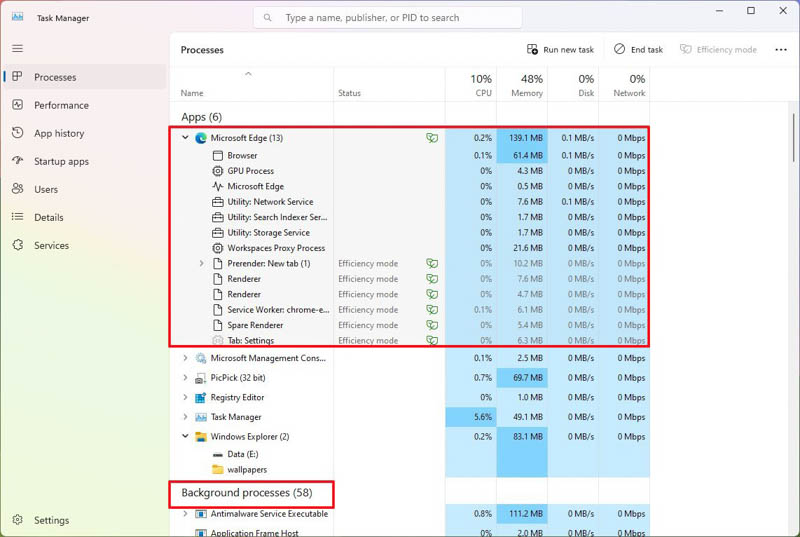
The task manager divides all running processes into categories based on programs, background, and Windows processes in this section. As in its previous versions, in Windows 11, it is possible to have several other instances or functions under the same process, which helps you understand their organization and use of available resources.
To open the process group, you can proceed in several ways. The first method is to double-click on the right Chevron. The second method is to right-click and select the open option. Using these methods, you can usually open a group of processes. Note here that multiple functions may be available when opening multiple instances of the same program, although this is not necessarily the case in all cases.
Find processes with high resources.
If an application is not responding, a web page is not loading, or system fans are running high, open the Processes section of Task Manager and note the current CPU, Memory, Disk, and Network usage statistics.
You can click on each column header and identify the processes that consume the most resources. If you see a process at sixty percent or more, this indicates a problem.
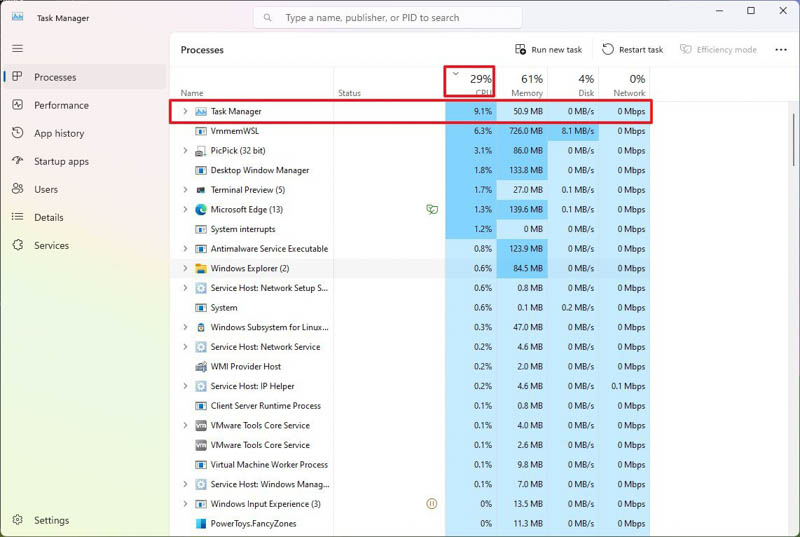
To make things easier, Task Manager uses a newer color to highlight the process consuming the most resources.
If you are not actively using the device and the system is not performing maintenance tasks, the processor should not increase more than thirty percent.
However, running programs and processes (even if you’re not using them) still consume memory resources, and memory usage will increase as the number of programs loaded increases. However, as long as the system needs memory, this is not a problem, and even if the memory is complete, the system can use virtual memory as an accessible memory resource. Of course, this may slow down the system’s performance, but there will be no strain.
Depending on your system configuration, you should keep memory usage within sixty percent. Drive usage should be around five percent unless you do rendering or copying tasks.
Finally, network speed and stability will only slow down operations that require local or Internet connectivity but will not affect system performance. If the problem is with a streaming application, web application, or file download, activity in the network column will stop at zero percent.
Termination of processes
Once the system resource problem is detected, you have several methods to terminate the process. You can:
Right-click on the process and select End task.

Select the operation and click the End task or Restart task button in the upper right corner of the screen.
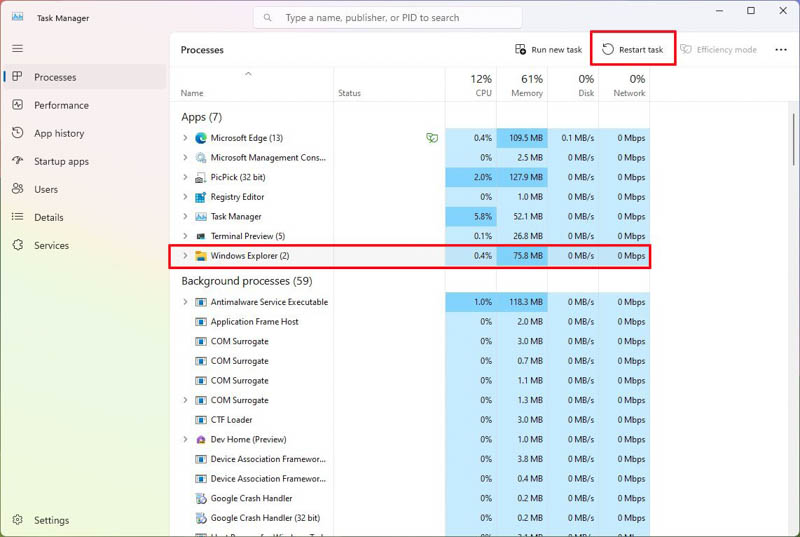
You should note that terminating a process or a group of them may crash the program and, in some cases, the system. So, anything that is not saved will be lost. S,o keep your work before continuing.
After closing the processes, you can restart the program from the Start menu, which will continue the required operations.
In some cases, you may need to restart the process manually. To do this, you can click the Run new task button in the Task Manager, type the name of the service, and click the OK button.
If you are unsure about the process you want to terminate, you can right-click on it, select the option to search online, and open a web browser with results that will help you understand the process. You can also use AI with Bing Chat or Google Bard to get more details about processing.
Also, the system may inform you about some procedures necessary to operate the system properly.
